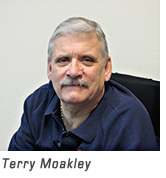 After becoming a disabled veteran in 1967, I was employed for 36 years. I worked for United Spinal/VetsFirst and its predecessor agency for 35 of those years, mostly either advocating locally for improved access for all disabled persons to multi-family housing, transportation, air travel, etc., or writing and editing in its Communications program. I took a one year hiatus from this agency in the early 1970s to teach English at a community college. I loved working with students but the pay was not good at all. I was lucky to be able to return to work here.
After becoming a disabled veteran in 1967, I was employed for 36 years. I worked for United Spinal/VetsFirst and its predecessor agency for 35 of those years, mostly either advocating locally for improved access for all disabled persons to multi-family housing, transportation, air travel, etc., or writing and editing in its Communications program. I took a one year hiatus from this agency in the early 1970s to teach English at a community college. I loved working with students but the pay was not good at all. I was lucky to be able to return to work here.
It’s not as easy for veterans, with or without disabilities, from the wars in Iraq and Afghanistan. Many employers have misconceptions about the abilities and skills of today’s veterans. So staff from VetsFirst became a member of the advisory board to VA’s Veterans in the Workplace project. Its primary objective was to develop information for employers, managers and supervisors, human resource managers and Employee Assistance Program staff so that companies can employ and retain Iraq and Afghanistan war veterans.
The Veterans in the Workplace team developed an online Veterans Employment Toolkit, available at www.va.gov/vetsinworkplace. To this writer, what is most valuable about this Toolkit is that it contains a wealth of resources for veterans, as well as solid information for employers who are committed to hiring military veterans.
One of the menu options in this Toolkit is “Veterans Are Valuable Assets.” Yes we are. It tells potential employers that veterans work well in a team because teamwork is the foundation of safe military operations. It tells Human Resource managers that veterans have a strong sense of duty because our warriors are accountable and they take great pride in completing their mission. And it tells Employee Assistance Program staff that our veterans possess a strong work ethic. In the military, the mission always comes first and in the workplace, veterans will put their job duties first, too.
The Veterans Employment Toolkit also has a “Supporting Your Veteran Employees” menu entry for employers and potential employers. One of its useful sections focuses on supporting employees in the Reserve and National Guard, including the responsibilities of employers under the 1994 federal Uniformed Services Employment and Re-employment Rights Act. There is also a section titled “Supporting Veterans’ Transition to Civilian Work,” which includes information on the many positive outcomes of military service.
The Toolkit also contains a “Challenges & How To Help” section that focuses more on resources that can aid military veterans readjustment to civilian life than it does on Post-Traumatic Stress Disorder (PTSD) and Traumatic Brain Injury (TBI), less common problems among today’s veterans. This section also contains information about Iraq and Afghanistan veterans with disabilities, and the many resources available to appropriately accommodate them in the workplace. This section of the Toolkit concludes with some “Communication Tips” for employers.
Nothing is more important to a returning veteran than either continuing his or her education, or finding a good job. The VA’s Veterans Employment Toolkit can help any employer locate not only an outstanding employee, but also to honor veterans who have placed their lives on the line in service to their country.
Terry Moakley
Chair of the VetsFirst Committee
